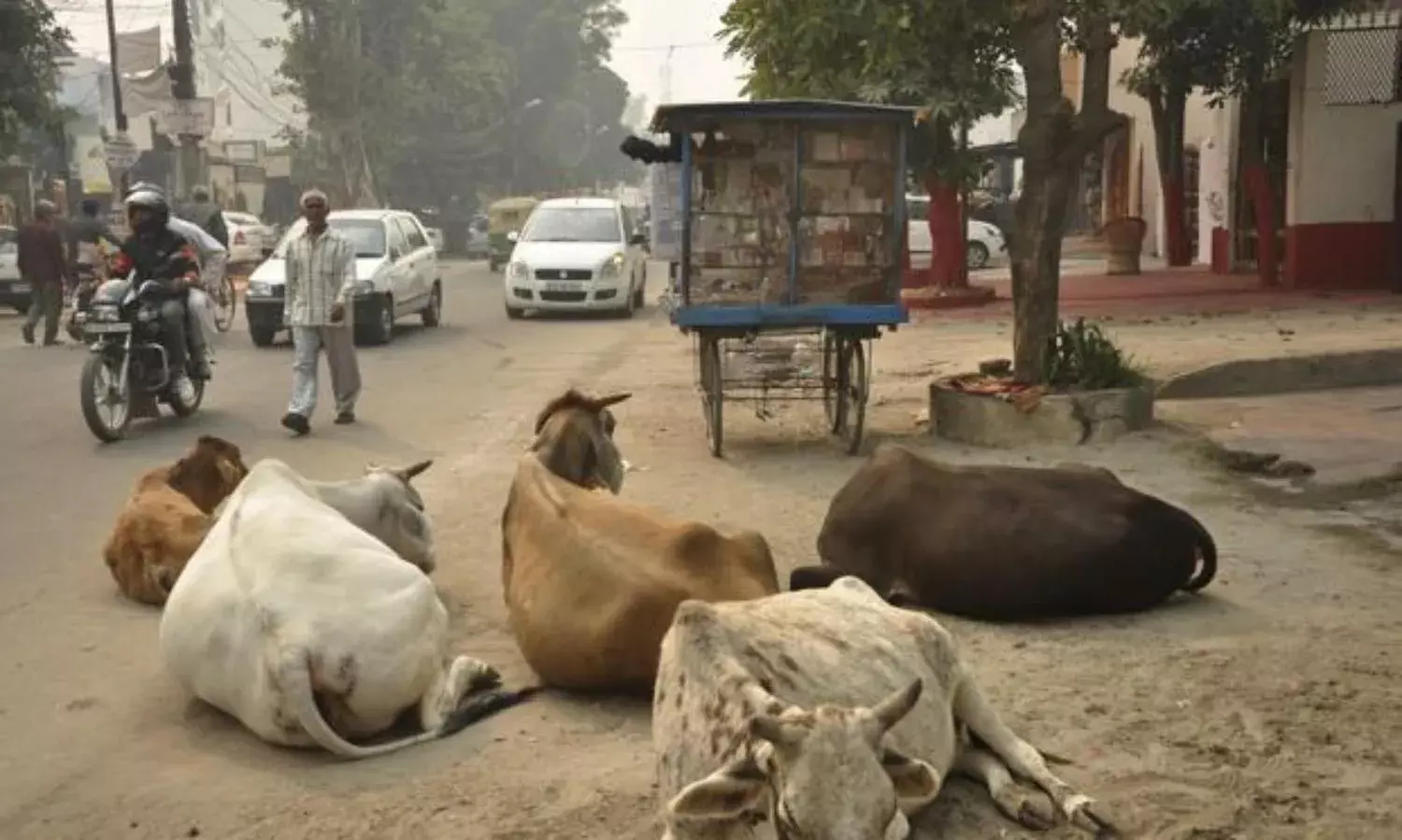No More Waiting Till the Cows Come Home, They Are On Their Way
It costs a farmer Rs.30000-40000 to maintain a cow, and he just cannot afford an unproductive animal

I always visit my home town, Kanpur, a couple of times a year to refresh my roots and to check whether my Brahmin community has been declared as OBC yet.
Just back after an exhilarating and kabab imbued visit, I am happy to report that my roots are thriving, but sadly the Brahmins have not yet been admitted into the hallowed portals of reservations.
The reason for the delay is twofold: one, there was some confusion about the caste status of Hanuman after the Yogi’s claim that he is a Dalit, and there was also a dispute over whether the crucial determinant is gotra or Godhra. The community itself is a divided lot, with some preferring a 10% commission over 10% reservation, arguing that the latter might get you into the Sachivalaya but the former will get you to Davos, and a photo-op with the Prime Minister to boot!
And so while the Brahmins argued among themselves, the cows have quietly taken over the state, in their own docile but persistent way. As I discovered during my visit, the Cow dominates all policy making in UP nowadays (the Kumbh Mela comes a close second).
This was only to be expected after the banning of cattle slaughter and sale by the BJP government, and Mr Yogi’s single minded enforcement of it has turned a problem into a disaster. The facts speak for themselves.
According to the UP govt’s own 2007-2012 cattle census the state has 6.46 crore (64 million) cows and buffaloes. Going by the national average, about 64 lakh male calves are born every year, and every year approximately 60 lakh of the existing population either become unproductive or die.
This means there are about 1.20 crore unproductive cattle generated each year, practically all of them belonging to farmers. Before the ban they were sent to abattoirs to feed the meat and leather industry. The farmer received one fourth of his original investment on an animal, which he used to acquire a new animal.
This was a well established ten year cycle in rural UP. The cycle has now been broken, with disastrous economic and social consequences.
The Indian leather and meat industry is worth $16 billion or about Rs 1,10,000 crores. It has lost 40% of its worth in the last two years. Agra alone manufactured 1 million pairs of footwear EVERY DAY. Kanpur has more than five dozen tanneries: its supply of hides has now dropped by 40% and the tanneries have shed some 400,000 jobs. It is estimated that in UP as a whole almost 3.50 million jobs may have been lost in these twin industries.
While this may well have served the BJP’s objective of striking at the economic roots of a particular community, it has had an unintended consequence on another, multi-religious, multi-caste, numerically vast, politically vital community: the Indian farmer.
It wasn’t that agriculture economists did not sounded the warnings. In an article last January Vikas Rawal, a professor of economics at JNU, cautioned that the cost of looking after 27 crore unproductive cattle in India would cost the nation Rs 5.40 lakh crore per year – or five times the defence budget. It would require five lakh acres of land to house them, there wasn't enough fodder in the country to feed them, and they would need more water than is consumed by all Indians put together.
Others calculated that it costs a farmer about Rs 30,000 or 40,000 a year to maintain a cow, bull or buffalo, and that there was no way he could bear this expense for an unproductive animal: he would have no choice but to let the animal loose and abandon it. They warned that, if allowed to roam free, these cattle would devastate farmers’ crops and create an agrarian crisis. The then chief economic advisor to the government maintained a notably pregnant silence.
This is exactly what has come to pass in Kanpur and the rest of UP over the past few months, and the whole government is running around in circles like a headless chicken. Farmers in Kanpur, Aligarh, Meerut, Agra and elsewhere do not need this additional burden on top of all their other woes, and have decided to take matters into their own hands: they have started rounding up the stray cattle and driving them into schools, government offices and police stations, and locking the gates.
District magistrates are dung-founded, students have been sent home, and policemen have been forced to give up their favourite sport of “encounters” and look after these cattle. In one district all government employees – 15000 of them by last count – have resolved to adopt one cow each! A panic stricken state government has allocated Rs 10 crore and 1.50 crore to big and small districts, respectively, to build cow shelters or gaushalas.
In order to raise funds for this losing battle it last week imposed additional cesses on excise duty, highway tolls, agriculture market committees etc. But the Chief Minister will still not read the fine print: it will cost the state at least Rs 40,000 crore every year to take care of these stray cattle, even if the appalling logistics of the exercise could be tamed. He doesn’t realise (or admit) it, but he has dug himself into a deep hole, and, in accordance with the first rule of all diggers, should now stop digging and reverse this pyrrhic article of faith.
The alternative, of course, is for him to keep praying at his Gorakhpur Matth till the cows come home. They are on their way.
Avay Shukla retired from the Indian Administrative Service in December 2010. He is a keen environmentalist and loves the mountains... he has made them his home.



